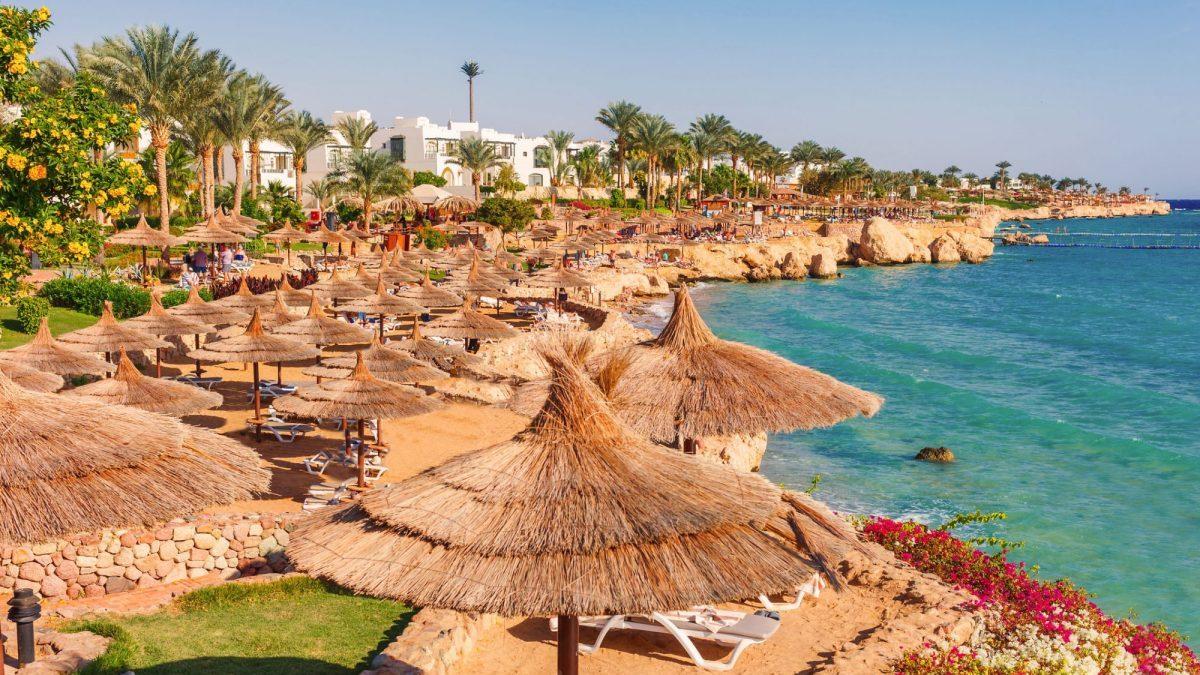
What is the best place to visit on Egypts Red Sea?
For millennia, Egypt's identity has been inextricably linked to the Nile River and the monumental pharaonic legacy lining its banks. Yet, to the east, a different world unfolds-a realm where the hyper-arid expanse of the Eastern Desert collides with the turquoise waters of the Red Sea. This is the Red Sea Riviera, a coastline of dramatic contrasts that has emerged as a world-class destination in its own right. More than just an afterthought to a cultural tour, the Riviera is a vibrant ecosystem and a premier hub for aquatic adventure, defined by the unique symbiosis between its two extreme environments.
On one side lies a stark, majestic landscape of rugged mountains and sweeping desert vistas, a place of profound silence and ancient history. On the other lies one of the planet's most biodiverse marine environments, a sea teeming with life and color. The allure of the Red Sea Riviera lies precisely at this ecological crossroads. It offers a dual identity: a sun-drenched sanctuary for relaxation and a challenging playground for adventurers. Here, travelers can spend their mornings exploring kaleidoscopic coral reefs and their afternoons venturing into the timeless desert, experiencing two of nature's most compelling theaters in a single day.
Mapping the Riviera: From the Sinai Peninsula to the Mainland Coast
Stretching for thousands of kilometers, Egypt's Red Sea Riviera is not a single, monolithic destination but a collection of distinct regions, each with its own geography and character. The coastline is fundamentally divided into two main areas: the resorts of the Sinai Peninsula and the coastal cities along the Western Red Sea shore on the Egyptian mainland. Understanding this geographical split is the first step in planning a trip, as it dictates the very nature of the holiday, from accessibility and atmosphere to the types of excursions available.
The Red Sea itself is a long, narrow inlet of the Indian Ocean, nestled between the continents of Africa and Asia. To its north, it forks into the Gulf of Suez and the Gulf of Aqaba, cradling the mountainous Sinai Peninsula. The resorts on the Sinai-including Taba, Nuweiba, Dahab, and the world-renowned Sharm El Sheikh-are geographically isolated from the Nile Valley. Their focus is almost entirely turned toward the sea and the peninsula's own unique attractions, such as the historic St. Catherine's Monastery at the foot of Mount Sinai.
Conversely, the resorts on the mainland's western shore-stretching from Ain Sukhna in the north down through El Gouna, Hurghada, and the southern outpost of Marsa Alam-are connected by a modern road network to the historical heartland of Egypt. This geographical reality transforms these destinations into dual-purpose hubs, offering both pristine beaches and a practical gateway to the ancient wonders of Luxor and Cairo. This distinction presents travelers with a fundamental choice: a holiday focused purely on the natural marvels of the Red Sea and the Sinai desert, or a hybrid journey that seamlessly blends coastal relaxation with the cultural treasures of the pharaohs.
When to Visit: Planning Your Trip Around the Sun and Sea
The Red Sea Riviera is blessed with an arid desert climate, ensuring year-round sunshine and minimal precipitation. However, the concept of a single "peak season" is misleading, as the optimal time to visit depends heavily on a traveler's priorities. The region experiences distinct seasons, each offering a different balance of advantages and trade-offs for activities like sightseeing, diving, and desert exploration.
Winter (November to February) is characterized by mild and comfortable daytime temperatures, often averaging around 21°C (70°F), making it the ideal season for exploring historical sites or embarking on desert safaris without the strain of extreme heat. This period is considered the peak tourist season, particularly for visitors combining a coastal stay with trips to Luxor or Cairo. The primary drawback can be the wind, which can make evenings feel cool and create choppy sea conditions that are sometimes less than ideal for diving.
Spring (March to May) represents a "sweet spot" for many visitors. Temperatures are moderately warm and pleasant, while the sea begins to warm up significantly. This season often boasts the best underwater visibility for divers and snorkelers, and the intense heat of summer has yet to arrive. The main consideration during spring is the
khamsin, a hot, dry wind that can occasionally cause sandstorms, particularly between mid-March and April.
Summer (June to August) is defined by intense heat, with daytime temperatures regularly exceeding 38°C (100°F) and sometimes reaching as high as 50°C (122°F) in inland areas. While this oppressive heat makes desert excursions or trips to Luxor challenging, it is the prime season for dedicated sun-seekers and water sports enthusiasts. The Red Sea reaches its warmest temperatures, often a balmy 28°C (82°F), perfect for long hours in the water.
Autumn (September to October), much like spring, is another excellent shoulder season. The summer heat subsides to more comfortable levels, but the sea remains exceptionally warm from the preceding months. This period is a favorite for divers and snorkelers, offering a superb balance of pleasant weather and ideal water conditions with fewer crowds than the winter peak.
| Season | Average Air Temp | Average Sea Temp | Key Advantages | Potential Drawbacks | Best For |
| Winter (Nov-Feb) | 21°C / 70°F | 22°C / 72°F | Comfortable for sightseeing and desert trips; fewer crowds than peak summer. | Cooler evenings; can be windy, potentially choppy seas for diving. | Cultural explorers combining the coast with Luxor/Cairo; family vacations. |
| Spring (Mar-May) | 26°C / 79°F | 24°C / 75°F | Pleasant warmth; excellent water visibility for diving; fewer crowds. | Occasional khamsin winds can cause sandstorms. | Divers and snorkelers; outdoor activity enthusiasts. |
| Summer (Jun-Aug) | 34°C / 93°F | 28°C / 82°F | Hottest air and sea temperatures; ideal for sunbathing and water sports. | Intense, oppressive midday heat; uncomfortable for desert/sightseeing trips. | Dedicated beach lovers; water sports enthusiasts who can tolerate high heat. |
| Autumn (Sep-Oct) | 30°C / 86°F | 27°C / 81°F | Warm days and pleasantly cool evenings; sea remains very warm. | Crowds begin to increase toward the end of the season. | Divers and snorkelers; budget travelers after the summer peak. |
Data synthesized from sources.
Choosing Your Base: A Tale of Three Cities
The choice of where to stay on the Red Sea Riviera is perhaps the most critical decision a traveler will make. The three main hubs-Sharm El Sheikh, Hurghada, and Marsa Alam-each offer a profoundly different experience. This reflects a clear evolutionary path in the region's tourism development: from Hurghada's origins as an organic, bustling local hub, to Sharm El Sheikh's rise as a polished international resort, and finally to Marsa Alam's emergence as an eco-conscious "last frontier." A traveler's choice is not just about location; it's about selecting a destination that aligns with their desired vacation style, whether it's authentic and chaotic, polished and all-inclusive, or quiet and nature-first.
Sharm El Sheikh: The Cosmopolitan Pioneer
Located on the southern tip of the Sinai Peninsula, Sharm El Sheikh is the Riviera's most internationally recognized resort town. It is polished, well-developed, and purpose-built for tourism, offering a cosmopolitan atmosphere with a vast array of upscale hotels, restaurants, and entertainment venues. The city's energy is concentrated in hubs like Naama Bay, a lively promenade of shops and cafes, and SOHO Square, a modern complex with fine dining and dazzling fountain shows. Sharm's primary draw is its direct access to some of the world's most legendary dive sites, including the protected marine sanctuary of Ras Mohammed National Park and the historic SS Thistlegorm wreck. It caters to travelers seeking an amenity-rich, vibrant holiday with world-class diving and a bustling nightlife.
Ideal Traveler: Divers of all levels, families seeking resorts with water parks and activities, and groups looking for a lively social scene.
Key Attractions: Ras Mohammed National Park, Tiran Island, Naama Bay, the Old Market, and excursions to St. Catherine's Monastery.
Hurghada: The Bustling Mainland Gateway
As the largest and oldest resort on the mainland, Hurghada offers a dynamic blend of tourist life and authentic local culture. It began as a fishing village and a popular holiday spot for Egyptians before its international discovery, resulting in a more sprawling and less manicured character than Sharm. The city is a collection of distinct districts, from the traditional bazaars of the old town, El Dahar, to the sleek yachts and modern eateries of the Hurghada Marina. Hurghada's most significant strategic advantage is its position as the primary launchpad for overland excursions to the pharaonic sites of the Nile Valley, making it the quintessential base for a combined beach and history holiday.
Ideal Traveler: Families (thanks to numerous water parks), budget-conscious travelers, and cultural tourists who want to easily combine a Red Sea stay with day trips to Luxor and Cairo.
Key Attractions: Boat trips to the idyllic Giftun and Mahmya Islands, Hurghada Marina, El Dahar souks, the Hurghada Grand Aquarium, and its unparalleled access to Luxor's Valley of the Kings.
Marsa Alam: The Last Frontier for Naturalists
Situated far to the south, Marsa Alam is the Riviera's tranquil, eco-conscious newcomer. Having only developed as a tourist destination in the last two decades, it retains the quiet, understated feel of the traditional fishing village it once was. The atmosphere here is less about nightlife and more about nature. Marsa Alam's reputation is built on its "untouched" beaches and "pristine" coral reefs, which are less affected by mass tourism and offer unparalleled encounters with rare and spectacular marine life. It is the premier destination for those who prioritize wilderness, serenity, and wildlife over bustling entertainment.
Ideal Traveler: Serious divers and snorkelers, nature lovers, wildlife photographers, and anyone seeking a peaceful, remote retreat away from the crowds.
Key Attractions: World-class diving at Elphinstone Reef (famous for sharks), snorkeling with spinner dolphins at Sha'ab Samadai (Dolphin House), and almost guaranteed sightings of sea turtles and the rare dugong (sea cow) at Abu Dabbab Beach. The vast Wadi El Gemal National Park offers a blend of desert and coastal ecosystems to explore.
| Feature | Sharm El Sheikh | Hurghada | Marsa Alam |
| Vibe & Atmosphere | Polished, cosmopolitan, vibrant, entertainment-focused | Bustling, sprawling, blend of tourist and local life | Tranquil, remote, nature-focused, understated |
| Ideal Traveler | Divers, families, nightlife seekers, luxury travelers | Families, budget travelers, cultural tourists | Serious divers, eco-tourists, wildlife lovers, those seeking peace |
| Diving & Snorkeling | World-class: Ras Mohammed, Tiran Island, SS Thistlegorm wreck | Excellent: Giftun Islands, diverse reefs, accessible for all levels | Pristine: Elphinstone (sharks), Dolphin House, Abu Dabbab (dugongs) |
| Nightlife | Abundant: Naama Bay and SOHO Square offer numerous clubs, bars, shows | Lively: The largest and busiest resort with many bars and clubs | Low-key: Mostly resort-based, relaxed bar scene in Port Ghalib |
| Ancient Site Access | Limited to Sinai sites (e.g., St. Catherine's); Luxor/Cairo requires flights | Excellent: Primary hub for road trips to Luxor (4-5 hours) and Cairo | Good: Closer to Luxor than Sharm, but farther than Hurghada |
Beyond the Big Three: Exploring the Riviera's Niche Retreats
The maturation of the Red Sea Riviera's tourism market is evident in the rise of specialized destinations that cater to specific lifestyles and interests. Beyond the main hubs, a sophisticated ecosystem of micro-destinations has emerged, offering hyper-tailored experiences for discerning travelers who know exactly what they want.
El Gouna: The Polished Lagoon Town
Just 25 km north of Hurghada lies El Gouna, a self-contained, master-planned luxury town that stands in stark contrast to its sprawling neighbor. Built across 20 islands connected by bridges and canals, it has earned the nickname "Venice of the Red Sea". As a gated community, it offers a high level of security and a serene, upscale atmosphere with a distinctly cosmopolitan and European feel. El Gouna is renowned for its award-winning eco-friendly initiatives, beautiful architecture, and high-end amenities, including two championship golf courses and the chic Abu Tig Marina, which is lined with gourmet restaurants and boutique shops. Its consistent winds and calm lagoon waters make it one of the world's premier destinations for kitesurfing and windsurfing. It attracts an affluent clientele, from families seeking a secure, highly managed environment to water sports enthusiasts and digital nomads.
Dahab: The Bohemian Rhapsody
Once a quiet Bedouin fishing village, Dahab has evolved into the Riviera's bohemian heartland, famed for its deeply relaxed and alternative vibe. Located on the Sinai Peninsula, about an hour's drive from Sharm El Sheikh, it is the antithesis of the large, all-inclusive resort model. Its waterfront is lined with casual, floor-cushion-strewn restaurants and dive shops, attracting a crowd of independent travelers, backpackers, and adventure seekers. Dahab is a legendary destination for the diving community, home to the world-famous (and notoriously challenging) Blue Hole, a massive submarine sinkhole, and the equally impressive Canyon dive site. It is also a global hub for free-diving and offers a wealth of land-based adventures, including rock climbing in the nearby canyons and trekking to Mount Sinai.
Safaga & Soma Bay: The Specialists' Havens
Further south of Hurghada, the smaller resorts of Safaga and Soma Bay cater to travelers with highly specific interests. Safaga, an ancient port town, is renowned for two things: its exceptional wind conditions, which made it the host of the 1993 World Windsurfing Championships, and its unique therapeutic properties. The area's black sand dunes and mineral-rich waters are sought after for their potential to treat skin and rheumatic ailments, making it a niche destination for therapeutic tourism. Just to its north, Soma Bay is a modern, exclusive enclave of luxury resorts built around a peninsula with stunning sandy beaches. Its main draws are its tranquility and its championship 18-hole golf course, designed by the legendary Gary Player, making it a premier destination for avid golfers.
The Red Sea's Crown Jewels: Unmissable Underwater Experiences
The primary allure of the Riviera is its astonishing underwater world. The Red Sea is a global hotspot of marine biodiversity, home to over 1,200 species of fish-of which 10% are found nowhere else on Earth-and more than 300 species of hard and soft corals. Remarkably, these coral ecosystems have shown a unique resilience to rising sea temperatures and bleaching events that have devastated reefs elsewhere, making them a critically important "hope spot" for the future of the planet's oceans. For divers and snorkelers, the region offers a unique "dual narrative" experience, allowing them to explore both one of the world's most vibrant natural ecosystems and one of its most significant historical wrecks, often on the same trip.
The Living Museum: Ras Mohammed National Park
Established in 1983, Ras Mohammed is Egypt's first and most famous national park, a protected marine reserve at the southern tip of the Sinai Peninsula where the nutrient-rich waters of the Gulf of Aqaba and the Gulf of Suez converge. This confluence creates a paradise for marine life, characterized by dramatic underwater topography, including vertical reef walls that plunge to depths of over 750 meters, and breathtaking coral gardens. The park is home to over 1,000 species of fish, sea turtles, and numerous invertebrates. Key dive sites like Shark Reef and Yolanda Reef are legendary for their sheer density of life, where divers are enveloped in massive schools of fish and can encounter various species of sharks in their natural habitat. With visibility often exceeding 30 meters, Ras Mohammed offers an unparalleled window into a thriving underwater metropolis.
A Dive into History: The SS Thistlegorm Wreck
Considered by many to be the greatest wreck dive in the world, the SS Thistlegorm is a submerged time capsule from World War II. This 128-meter-long British transport ship was loaded with military supplies destined for the Allied forces in North Africa when it was sunk by German bombers on October 6, 1941. It lay undiscovered on the seabed until the 1950s, when it was found by the team of Jacques Cousteau. Today, it rests upright at a depth of around 30 meters, its cargo holds remarkably intact. Divers can penetrate the wreck to find an astonishing collection of historical artifacts: BSA motorcycles, Bedford trucks, armored vehicles, stacks of Lee-Enfield rifles, Wellington boots, and even two steam locomotives that were carried as deck cargo. The dive is challenging, often subject to strong currents and requiring advanced certification due to its depth, but it offers a hauntingly beautiful and unforgettable journey into history.
Adventures in the Eastern Desert: Where Sand Meets Sea
The Red Sea experience is incomplete without venturing into the vast, mountainous landscape of the Eastern Desert that forms its dramatic backdrop. These desert excursions offer a thrilling counterpoint to the tranquility of the sea and provide a glimpse into another facet of Egyptian life and culture. These are not merely adrenaline-fueled activities but carefully curated cultural experiences, creating an important bridge between the modern tourist resorts and the ancient traditions of the desert's inhabitants.
Desert Safaris: Quad Bikes and Jeeps
The most popular way to explore the desert is via a safari, typically on quad bikes (ATVs) or in 4x4 jeeps. These tours offer the exhilarating experience of navigating sandy plains, weaving through rocky canyons, and climbing dunes for panoramic views of the starkly beautiful terrain. Tours are available at different times of day, with sunset safaris being particularly popular, allowing travelers to watch the sky blaze with color as the sun dips behind the Red Sea Mountains.
Bedouin Culture and Stargazing
Many desert safaris culminate in a visit to a traditional Bedouin village, offering a window into the lifestyle of the region's nomadic people. This cultural immersion typically includes a short camel ride, a demonstration of traditional flatbread making, and sharing a cup of sweet, herb-infused Bedouin tea in a communal tent. As evening falls, visitors are often treated to a barbecue dinner featuring grilled meats and local specialties, accompanied by traditional music and performances like tanoura (whirling dervish) and belly dancing. The experience is often capped by one of the desert's most magical offerings: stargazing. Far from the light pollution of the resorts, the night sky is revealed in breathtaking clarity, with many tours providing telescopes and guidance from local astronomers to identify constellations and planets.
A Gateway to Antiquity: Combining Coast and Culture
One of the most compelling features of the mainland Red Sea Riviera, particularly Hurghada, is its role as a strategic hub for exploring Egypt's pharaonic treasures. The development of a secure, modern road connecting the coast to the Nile Valley has fundamentally altered the traditional tourist circuit, allowing for a new type of itinerary that seamlessly blends ancient history with contemporary leisure. A traveler can now wake up to a sunrise over the Red Sea, spend the day inside the tomb of Tutankhamun, and return to their beach resort for dinner-a logistical feat that was once difficult to achieve.
The Journey to Luxor
The overland journey from Hurghada to Luxor is one of Egypt's most popular excursions. The 300-kilometer drive across the Eastern Desert takes approximately 4 to 5 hours each way, making for a long but incredibly rewarding day trip. Tour operators offer well-organized packages, typically including an early morning hotel pickup, transportation in an air-conditioned vehicle, and the services of an Egyptologist guide. A standard itinerary covers the essential wonders of ancient Thebes: on the East Bank, the colossal Karnak Temple complex, and on the West Bank, the royal burial ground of the Valley of the Kings, the magnificent terraced Temple of Queen Hatshepsut, and the towering Colossi of Memnon.
The Trip to Cairo and Giza
For those based on the Red Sea, a visit to the last remaining wonder of the ancient world is also within reach. While an overland trip to Cairo is possible, it is an extremely long journey. The more common and practical option is to take a short domestic flight from Hurghada. Day tours by air allow visitors to spend a full day in the capital, typically covering the Giza Plateau to see the Great Pyramids and the Sphinx, followed by a visit to the Egyptian Museum in Tahrir Square, home to the golden treasures of Tutankhamun and the world's largest collection of pharaonic antiquities.
Practical Guide for the Savvy Traveler
Getting There and Getting Around
The Red Sea Riviera is well-served by three main international airports, each acting as a gateway to its respective region. Hurghada International Airport (HRG) is the primary hub for the mainland coast, including El Gouna and Safaga. Sharm El Sheikh International Airport (SSH) serves the Sinai Peninsula, while Marsa Alam International Airport (RMF) provides direct access to the southern resorts.
Once on the ground, pre-arranged hotel transfers are the most common way to get from the airport to your resort. Taxis are widely available, though it is advisable to agree on a fare before starting the journey. For travel between resorts or into local towns, shuttle buses and private cars are readily available. Within the unique town of El Gouna, motorized tuk-tuks are the iconic and most convenient mode of transport.
Cultural Considerations
While the atmosphere within the resorts is generally relaxed and international, visitors venturing into local towns and markets will have a more rewarding experience by observing a few cultural customs.
Dress Code: In resort areas, beachwear is perfectly acceptable. However, when visiting a local town, market, or especially a mosque, modesty is appreciated. Covering shoulders and knees is a respectful gesture for both men and women.
Tipping (Baksheesh): Tipping is a deeply ingrained and expected part of Egyptian culture. It is not just a reward for good service but a customary gesture for almost any assistance provided. It is wise to carry small-denomination Egyptian pounds for tipping waiters, drivers, hotel staff, and guides.
Bargaining: In the traditional markets (souks), bargaining is a standard and often friendly part of the shopping experience. It is acceptable and expected to negotiate prices for souvenirs and handicrafts.
Sustainable Seas: Traveling with Conscience
The immense beauty of the Red Sea's coral reefs is also their greatest vulnerability. The growth of tourism, while economically vital, places significant pressure on this fragile ecosystem. Direct damage from boat anchors, inexperienced snorkelers and divers trampling on coral, and indirect impacts from coastal construction and pollution are serious threats.
In response, Egypt has launched significant conservation programs. The Egyptian Red Sea Initiative, in partnership with international organizations, aims to safeguard nearly 100,000 hectares of coral reefs. Key efforts include expanding marine protected areas and installing a network of mooring buoys to prevent destructive anchoring, particularly in popular dive sites like those in Ras Mohammed National Park. As a visitor, you are a crucial partner in these efforts. Travelers can contribute to the preservation of the Red Sea by choosing eco-conscious dive and tour operators, practicing responsible underwater etiquette (never touching or standing on coral), giving marine life its space, and supporting resorts with demonstrated commitments to sustainability. By doing so, visitors help ensure that the natural wonders of the Red Sea can be enjoyed for generations to come.
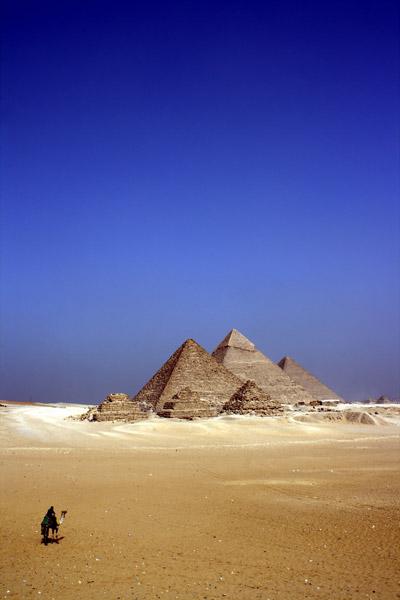
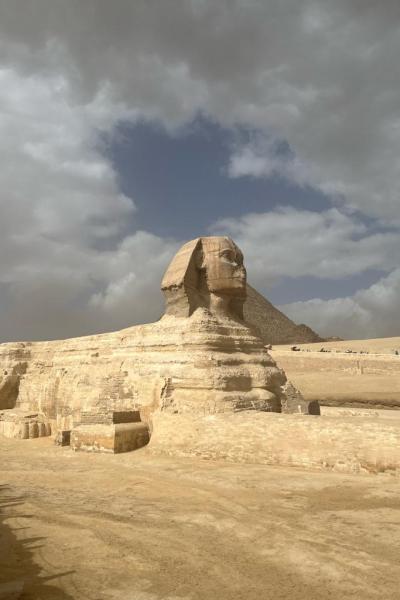
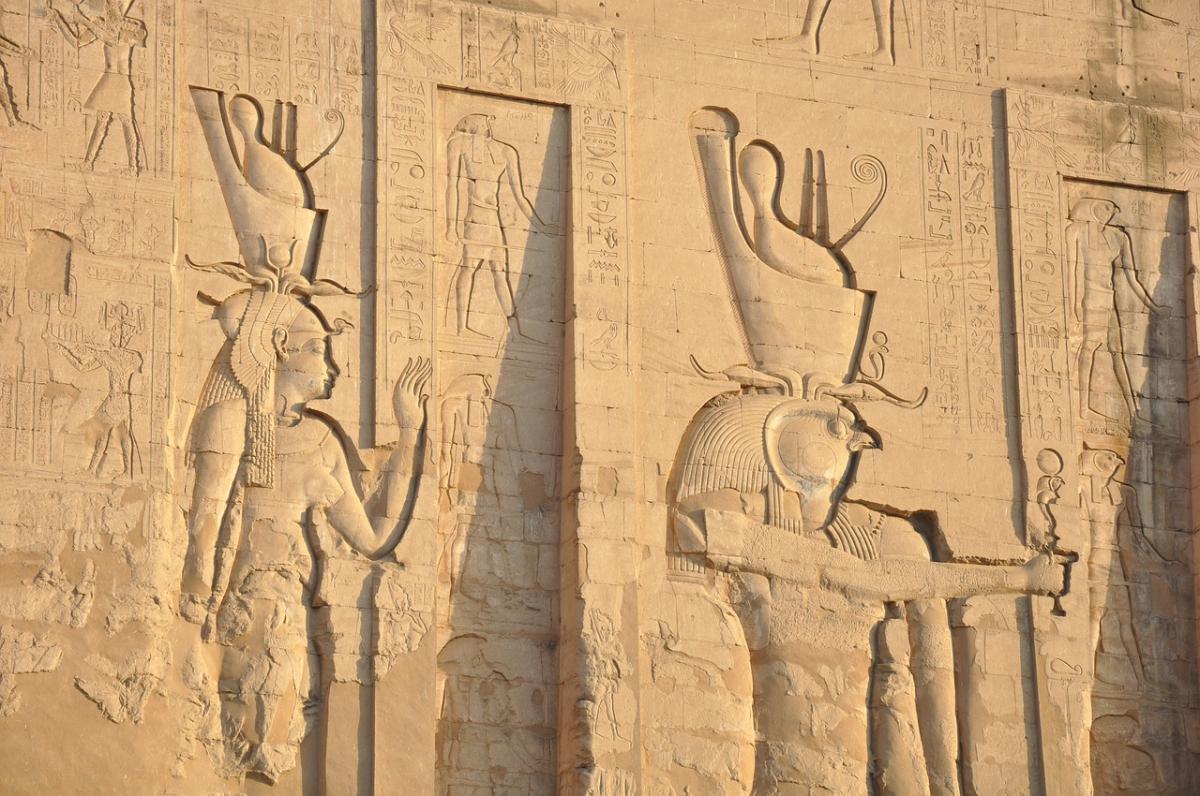
Egypt, a nation at the crossroads of Africa and the Middle East, boasts a culture that is as rich and layered as its millennia-old history . From the monumental legacy of the Pharaohs to the enduring influence of Coptic Christianity and the pervasive traditions of Islam, Egyptian culture is a vibrant...
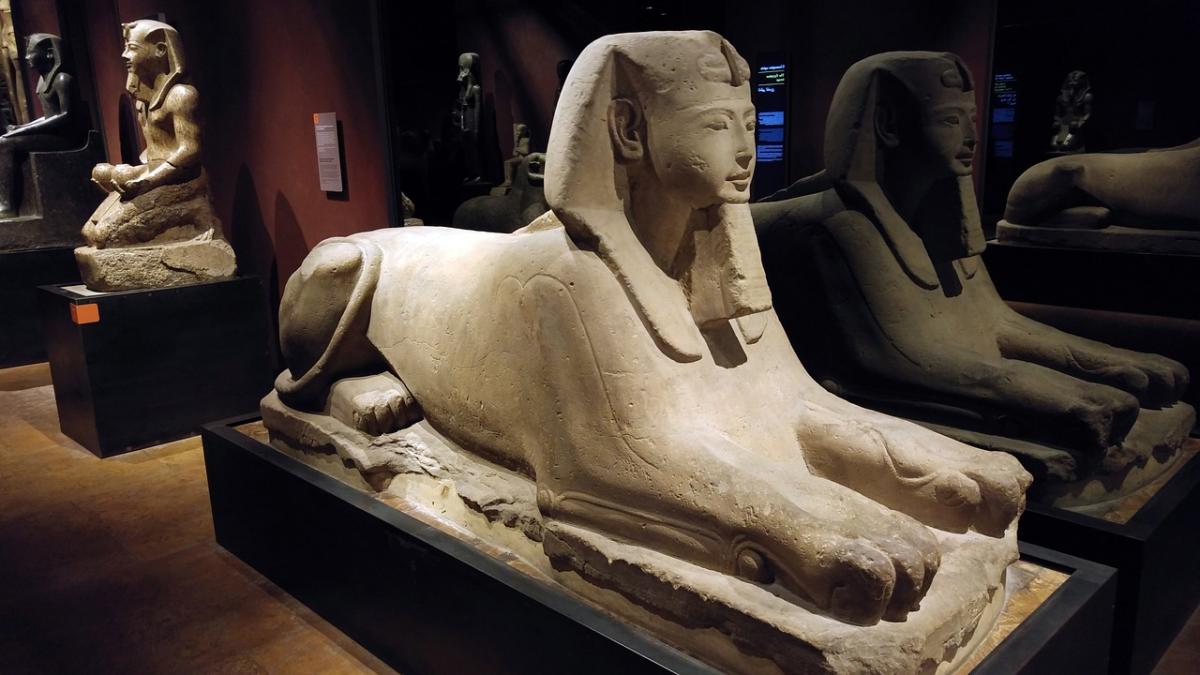
Located in the heart of Cairo on Tahrir Square, the Museum of Egyptian Antiquities, commonly known as the Egyptian Museum, stands as the oldest archaeological museum in the Middle East . For over a century, it has been the worlds foremost repository of Pharaonic antiquities, offering an unparalleled...
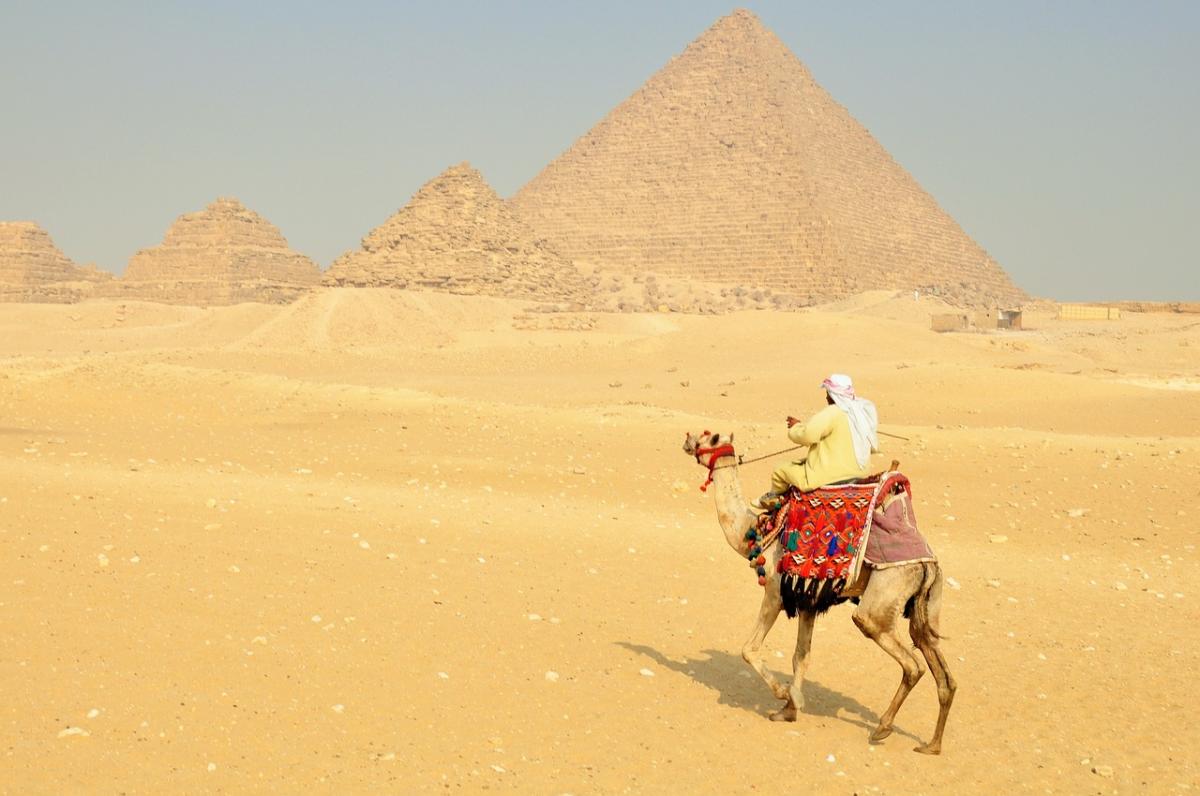
Egypt, the land of pharaohs, ancient tombs, and the life-giving Nile, often conjures images of grand tours and luxurious cruises . However, this cradle of civilization is remarkably accessible for the budget-conscious traveler . With careful planning, you can experience its most iconic wonders without...